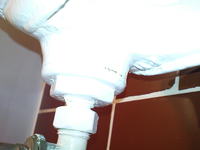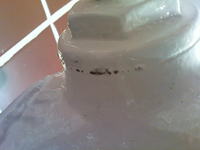The key is larger than 32 mm. If it is an old shell, it is even 48 mm, in newer ones a bit smaller (probably 42 mm), but you can always use a "Swede" (a large one). Of course, the water must be drained from this heater. Unscrew the plug, thoroughly clean the edge of the rib to which the plug is screwed in (clean the plug too, or give a new one), give a new gasket, which is also good to lubricate the so-called the liquid gasket (special sealing silicone, red) and screw it STRONGLY. You do not need to use tow for the thread (because it is cylindrical and they can slip), but you can - saturated with good thread paste or linseed varnish. The heater does not need to be removed for this. If the cap cannot be unscrewed, take a striking ring spanner (with such an anvil) and tapping the spanner unscrew it. Note the direction of the thread. Blind plugs usually have a left thread, while plugs to which the supply valve and the return pipe are screwed - right (if the radiator is cross-connected, the plug with the return screw connection is left).



